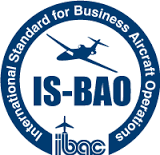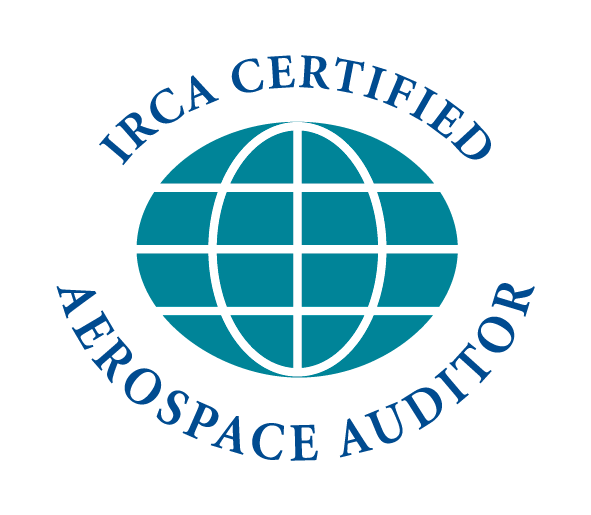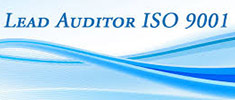Preparing for the IS-BAO Audit
The following steps need not be completed in precisely this order, but the flow of preparation should generally follow this pattern.
- Obtain the IS-BAO package from IBAC. The package is also available through the NBAA website (for NBAA members) or HAI website (for HAI members). The IS-BAO package does not expire, so if you purchased one in the past, it is still valid. The package also includes notification of all future updates.
- Inventory the received material. You should have:
- IS-BAO Manual (blue binder.) It includes
- Introductory information and the IS-BAO standards (Chapters 3 – 15)
- IS-BAO Protocol checklist
- Guidance Material (GM)
- IS-BAO Audit Procedures Manual
- CD-ROM disc with several IS-BAO documents.
- IS-BAO Manual (blue binder.) It includes
- Review the contents of the SMS Toolkit, included on the CD-ROM. It contains many useful documents in both Word and .pdf format.
- Review all pertinent company manuals and directives that may contain information related to the IS-BAO protocol. You want to verify currency and accuracy of each document while refreshing yourself on the contents of each manual.
- Copy the IS-BAO Audit Protocols checklist (current year) (Audit Procedures Manual, Section 8) and/or print a Word version of the same document (from the SMS Toolkit.)
- Distribute portions of the Protocols checklist to appropriate members of your organization. Be aware that some people may need parts from different sections. For example, Section 9 covers Maintenance Control, but parts of Sections 4 & 5 also refer to Maintenance.
- On the Protocols checklist, each contributor should indicate whether, for his or her assigned section, the department satisfies each individual requirement, and how that requirement is met. In most cases the Remarks column will contain a reference to a specific company manual with section number and title noted. Abbreviations, acronyms and other shorthand are acceptable to make the document most useful, e.g. GOM 3.1.2, Responsibilities & Authorities.
- When the checklist is completed, record all entries on a Word version of the protocols checklist. The form expands automatically to fit in remarks that take up several lines.
- It may be easier to work with one central Word document, which all players have access to. This would minimize copying, cut and paste, etc.
- Ultimately, this document will be sent to the auditor to review in advance of the audit, so neatness and clarity count.
- Contact several IS-BAO auditors to determine their availability, terms of service (fee, how long they’ll be on site, etc.), and other factors you would normally consider when dealing with a private contractor.
- A list of accredited auditors is at http://www.ibac.org/is_bao/accredited-auditors, but be aware that many accredited auditors are not conducting IS-BAO audits.
- Consider recommendations from flight departments that have already completed an IS-BAO audit.
- Ideally, an auditor should be contracted 6 – 8 weeks before your desired completion date. This will give both you and the auditor time to review your materials and make adjustments before the official audit begins.
- Prior to the onsite audit, the operator should request a briefing for the auditor to familiarize him/her with the various tools and management of the Safety Management System.
- When ready, send the same documents to the auditor. The auditor will also be given copies of your documents such as the Flight Operations Manual, Emergency Response Plan, SMS Manual, etc.)
- Make sure the Auditor sends the suggested agenda for the audit
- Opening meeting with Key individuals with a schedule of what is expected and what will happen during the on-site audit.
- Schedule of meetings with times (keep in mind the auditor will be flexible based on the clients daily events).
- Have a time for the closing meeting/out brief with Key individuals, Director of Operations, Chief of Maintenance, Chief Pilot, Safety Manager and others that the DO would like to have attend.
- Make every effort to make your people available on the day(s) of the audit, as requested by the auditor. They will obviously include the Director of Operations, Chief Pilot, Director of Maintenance, Safety Manager, Training Manager (if assigned), and a representative number of pilots, mechanics, and other employees. The auditor will also need to inventory one or more aircraft, so at least one should be kept on site.
- On the day(s) of the audit, provide the auditor with a comfortable place to work. He or she will need
- To set up a laptop computer with internet access
- To set up a portable printer (if requested)
- To interview one or two of your employees at a time
- If suitable space is not available in your office, try to arrange for a conference room provided by the FBO.
- Some auditors use a team of two or more persons to address different parts of the operation simultaneously, thereby limiting their time on site.
- The audit will be completed with one of these results:
- A completely clean audit in which all the IS-BAO standard are satisfactorily met.
- One or more minor findings. The operator must draw up a remedial action plan that will resolve the issue(s) to the satisfaction of the auditor, but complete resolution is not required for IS-BAO registration. Minor findings can be corrected while the auditor is still on-site. Advise Baldwin, if assistance is needed, for support in addressing and documenting minor findings.
- One or more major findings. A major finding must be resolved to the satisfaction of the auditor before the audit paperwork can be submitted to IBAC.
- If the audit is successful (clean slate or only minor findings of non-conformity, all of which have a remedial action plan for resolution), the auditor will complete the paperwork on site, or shortly thereafter. It includes
- IS-BAO Registration Application
- IS-BAO Audit Finding Form, as appropriate
- IS-BAO Registration Form ($350.00 fee for Initial Stage I registration or $150.00 for renewal of the registration, Stage II or III, which is not part of the auditor’s fee). The Auditor is not responsible for sending in this form but will leave it with the client to do. (Price effective Sept 2014)
- A copy of the operator’s company logo, if it should be placed on the registration certificate (this is optional.)
- Name(s) and address of one or more company executives that should be sent a congratulatory letter from IBAC.
- Be open to suggestions and recommendations made by the auditor, even if they are not part of the official findings. It is the Client’s choice to put those recommendations in place, however, since the reason the Auditor would make suggestions or recommendations is to share “Best Practices”, we would suggest considering implementing the recommendations.
- The audit paperwork will be submitted to the IS-BAO Standards Board. If they agree with the auditor’s assessment, a plaque and registration certificate will be mailed to the operator. If requested, congratulatory letters will be mailed to executives, as above. If you would like a certified “raised IS-BAO logo” copy of the certificate, that offer is made when sending in the registration paperwork. Most operators like to carry these in each aircraft for International Operation reasons.
- The certificate mailing will be followed up with a critique mailed to the operator. An honest assessment of the audit process, the materials used, and the auditor is desired. Consistent with the intent of a Just Culture, open communication and honesty is encouraged to allow the audit process to continually improve.
IS-BAO registration is valid for two years from the date on the certificate, Stage I and Stage II and three years from the Stage III certificate date to the next Stage III (to the end of the month of issue). The second audit will attempt to assess how well your department adheres to the Safety Management System, utilizes its tools, and adjusts to lessons learned. If you have not already started, move onto that path now. Stage III audits primarily concentrate on the Safety Culture of the SMS and if all members are using it effectively. In other words, have all members “Bought into the SMS” and the Safety Culture of the organization. It should be a “Living and Breathing” program by Stage III time.
Don’t hesitate to contact us should you have any questions with regard to preparing for an IS-BAO Audit.




